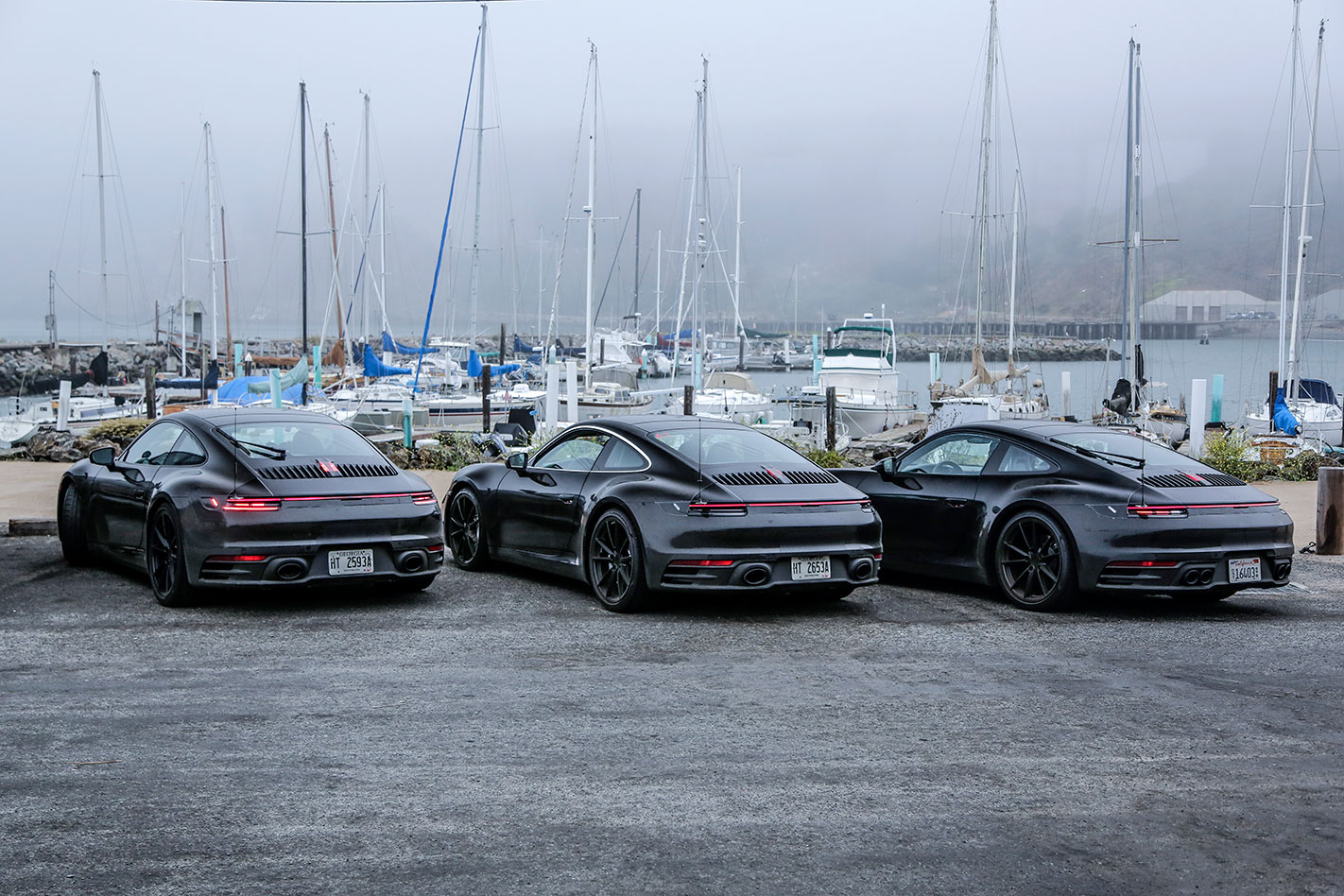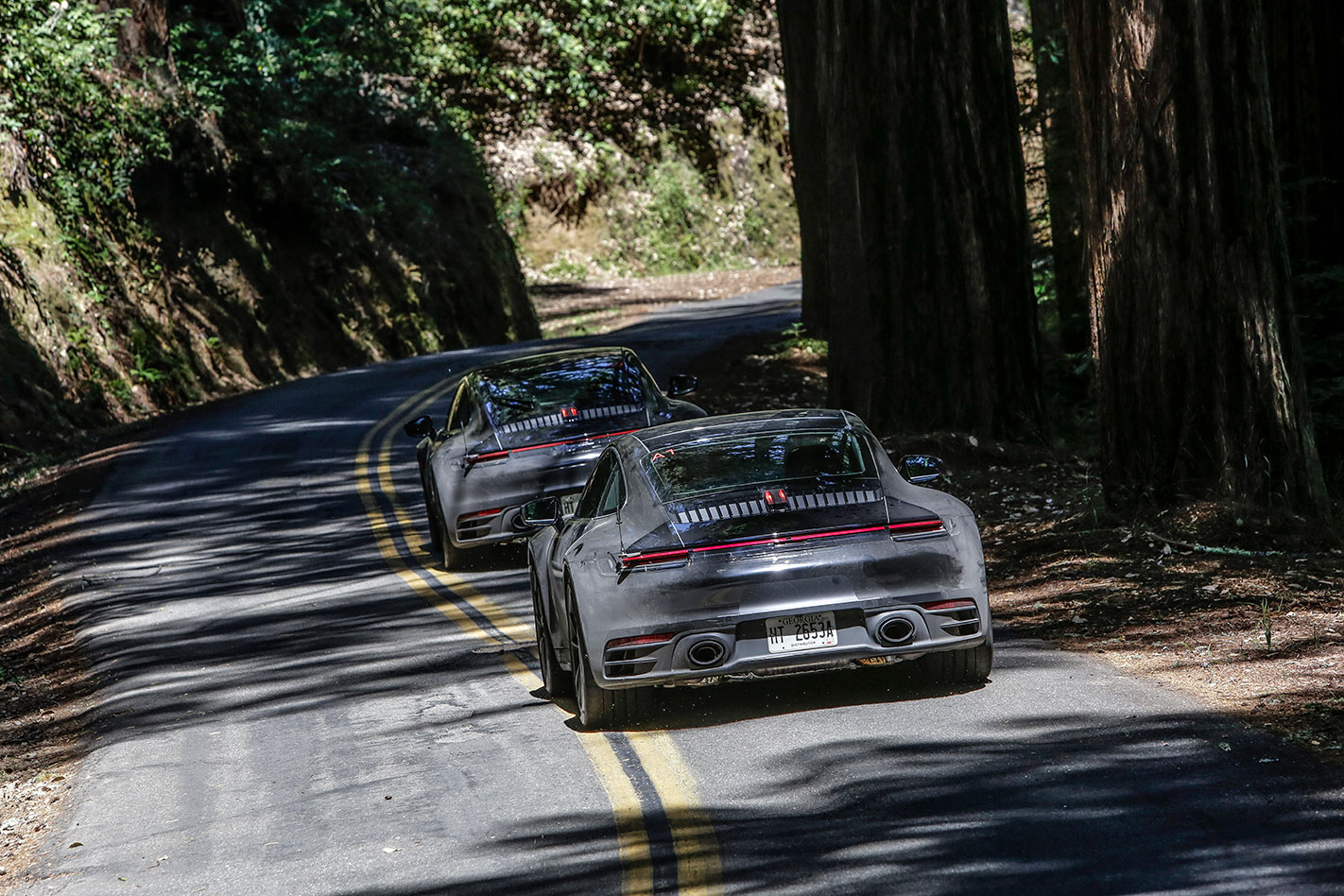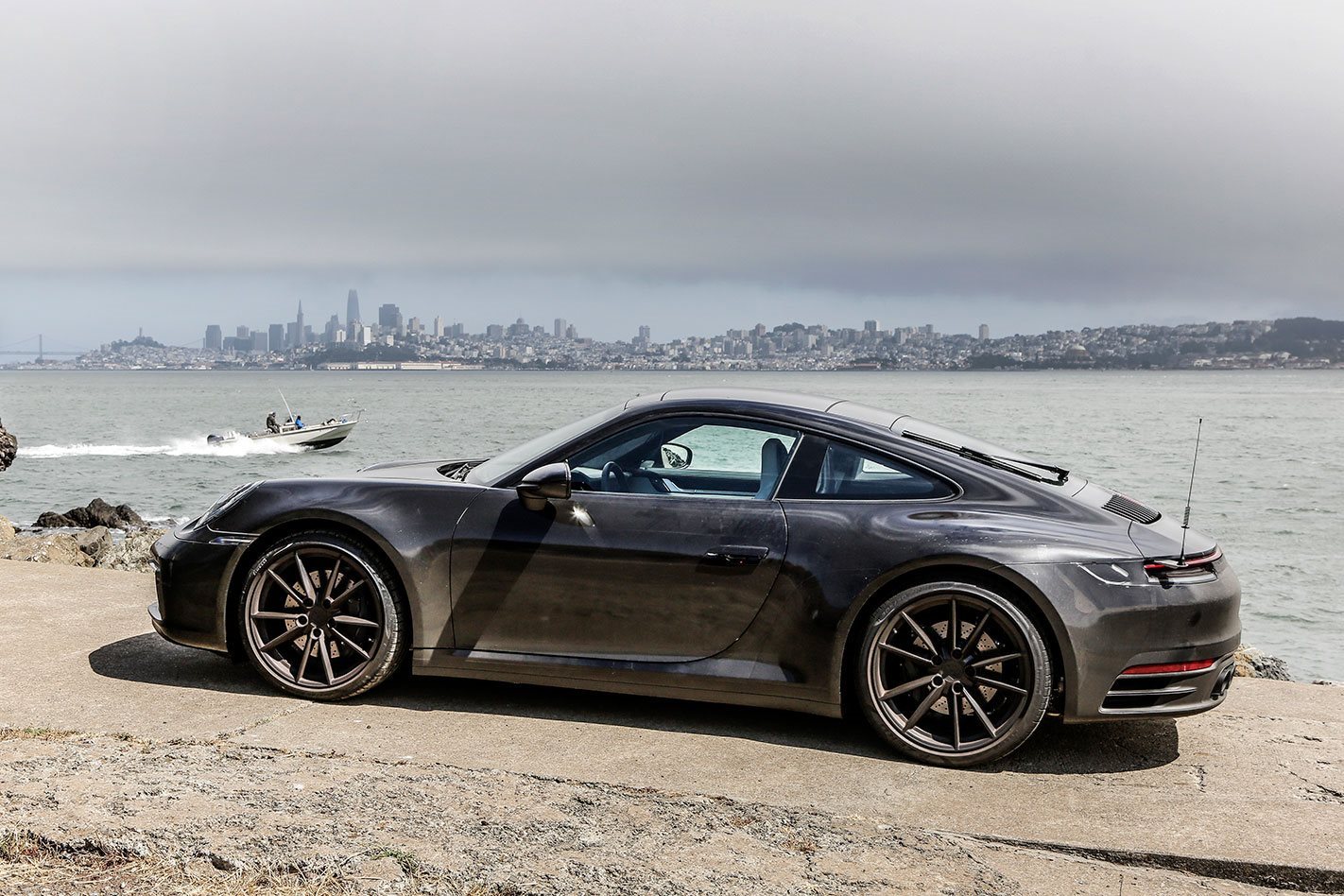WHEN a new generation of Porsche 911 lands on the scene, car enthusiasts the world over sit up and take notice. Pretty soon the current 991-generation of 911 will have run its course, and the 992 will touch down in its place. If you’re not excited yet, maybe we can help.

For decades the 911 has been a sports car benchmark, and the 992’s rapidly approaching arrival seems a pertinent time to look at everything we know about the new model.
You can read Kyle Fortune’s impressions from when his ride in a 992 development mule earlier this month here, but if you are short on time, here are the cliff notes:
Wide-bodies all ‘round
The ‘standard’ 911 body style will now be the wider version, formerly reserved for Targa and higher-end variants. Porsche has confirmed that even base-model 992 911s will share the same dimensions as the outgoing wide-body GTS.
“There won’t be a narrow-bodied 911,” said August Achleitner, vice president of the 911 and 718 product lines.
That means the front track of the 992 Carrera grows by 40mm, the restyled front-end has an overhang 20mm longer, and the car’s height rises by 5mm.
Two chassis tunes will be available, with the optional Sport Chassis riding 10mm lower than standard, with a “slightly more prominent front spoiler”.

The tyres are staggering
Even at the bottom of the 911 line-up, the 992 Carrera will share a trait with the outgoing track-focused GT3. That is, it will roll on wheels with staggered diameters; the front rims on the 992 Carrera S measure 20-inches, while the rears are 21s.
The staggered fitment, combined with the wider front track, has allowed the engineers to soften the rear anti-roll bar for improved traction on corner exit.
A variant for everyone
Set to debut at the LA Motor Show next month, the 992 911 line-up will initially consist of rear-wheel-drive Carrera S, and four-wheel-drive 4S models.
The duo will initially be available with only PDK automatic transmissions, but don’t fret as manuals will be coming (more on that later).
A base Carrera variant will arrive in 2019, along with the three-pedal ‘box, and cabriolet versions.

Changes to the oily bits are subtle but important
On the spec sheet not much has changed in the generational leap for the 911’s engine, with Porsche retaining the 3.0-litre turbocharged flat-six package.
However, as Achleitner explained, there have been discreet, yet significant upgrades.
“We have a connection between the cylinder heads on both sides, and link directly to the longitudinal beams of the body. It makes the whole system stiffer, feels more rigid,” he said.
The PDK gearbox has also been revised, now with eight gears instead of seven. The new transmission is derived from the unit used in Porsche’s four-door Panamera.

It’ll shock purists
If you are a hard-line Porsche purist, now is the time to cover your eyes and keep scrolling, because Porsche has allowed electrification to play a significant part in the 992’s design.
Along with adding an extra ratio, the new PDK gearbox has brought with it future-proofing for a potential hybrid drive.
Extra room has been made in the gearbox housing to ensure electrification of the 911 is possible.
Achleitner told us the entire car’s layout and structure is designed for the inevitable onslaught of hybrid systems to make its way underneath the Porsche’s skin, with space in the body ready to accommodate batteries.
No need to set fire to your torch and grab a picket just yet though, with Achleiter adding “we do not do it [electrification] right now, because we are not yet satisfied with the performance, especially of the batteries.”
How long that stay of execution will last remains uncertain.

Weight saving has been a focus
Keeping the new 911’s weight in check has been a challenge for Porsche’s engineers, with a new aluminium-heavy diet devised.
More of the 992’s body is formed from the lightweight metal, with the entire side panel from the A-pillar to rear wing constructed from aluminium.
This helps save 10-15kg from the rear of the car, but tightening emission regulations negates some of that hard work.
European 992s will require exhaust particulate filters, which add around 7.5kg of weight. It remains unclear whether or not Australian delivered cars will be lumped with the heavier system, but with less strict emissions regulations locally, it’s unlikely.
Yeah, it’ll be fast. Duh.
It wouldn’t be a new generation 911 without a performance bump. The 3.0-litre turbo engine in the 992 Carrera S will deliver the same 331kW as the outgoing 991.2 Carrera GTS, with torque in the region of 530Nm.
It’s expected lesser Carrera models will send 280-290kW to the wheels when they arrive.
Fitted with launch control, the Carrera S should be able to cut a comfortable sub-4 second 0-100km/h time when fitted with a PDK transmission – that’s as fast as the 997 Turbo.
This bodes well for faster, more performance-focused variants like the GTS and GT Division cars.

There is a new drive mode
The calibration engineers have been hard at work refining a new drive mode which will join the standard Normal, Sport, Sport+ and Individual settings.
Unfortunately for track fiends it’s not performance-orientated, with the new ‘Wet’ addition designed to ensure things stay shiny side up in damp conditions.
Achleitner stated the Wet driving mode became a necessity due to the 992 being relatively light with wide tyres.
The mode is linked to a sensor placed in the front wheel well which, independently of the wipers, detects water on the road surface using acoustic monitoring.
If a wet surface is detected, the 992’s driving systems are automatically primed, with the rear wing changing to a more aggressive angle of attack for more downforce, the stability management system adjusting its responses, and the gearbox reverting to the less aggressive ‘Normal’ setting.

Even the door handles are aerodynamic
Making the 992 as aerodynamically efficient as possible was so important for designers that even the door handles have been affected.
All of the 992-gen 911s will have keyless entry, with the handles sitting flush with bodywork normally, and popping out as you approach the car. In the retracted position, the handles help the 992 achieve a 0.29 drag coefficient figure.
The manual has been saved
Driving enthusiasts who can’t bring themselves to buy an automatic 911 will be pleased to hear the seven-speed manual transmission will return for the 992.
According to Porsche roughly 15 percent of 911s are optioned with three pedals globally, with this market share increasing in certain markets like the USA, and in particular with variants further up the range.
This demand from the market has ensured the manual 911 will live on for now.






